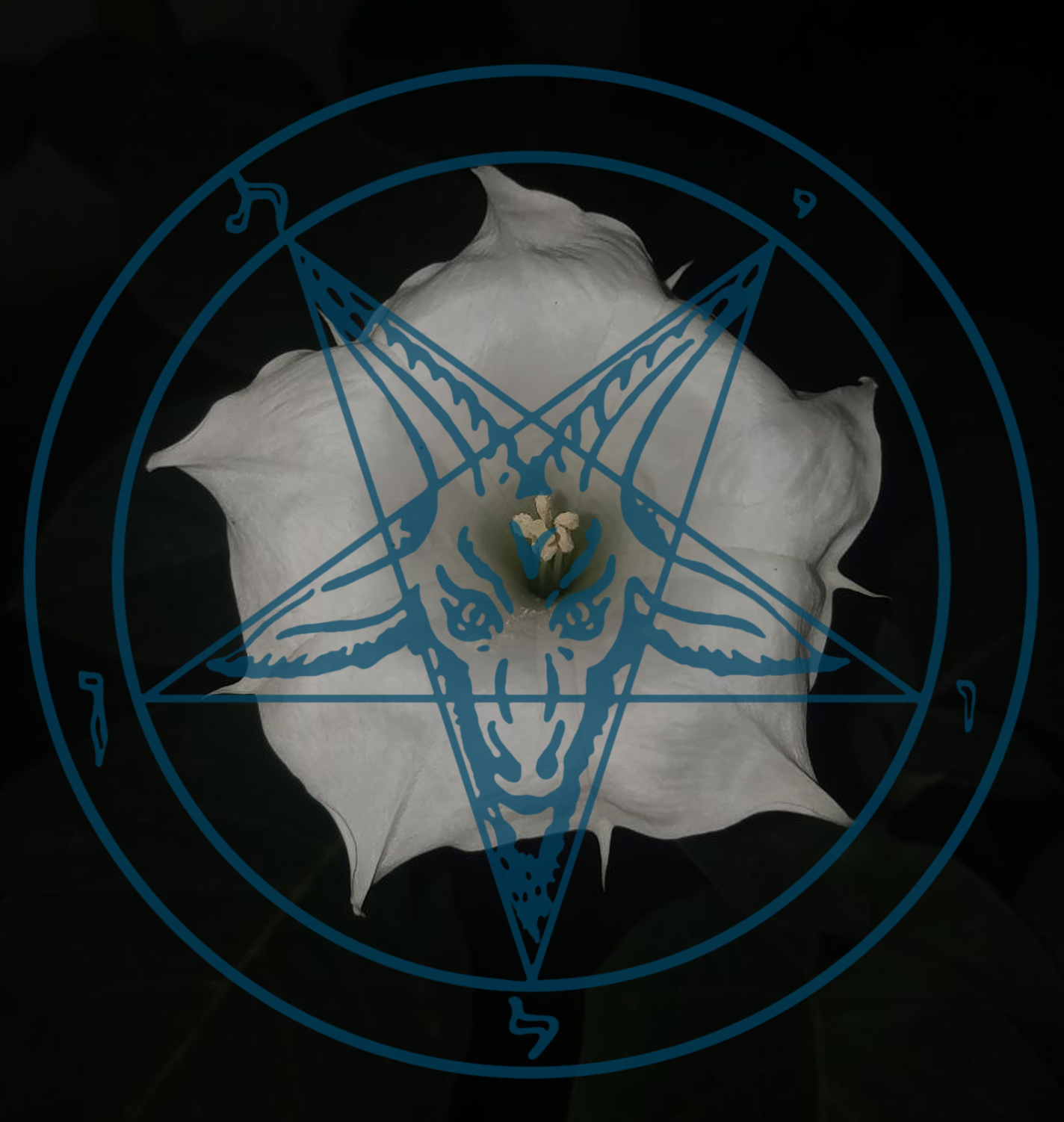
Datura, Leviathan and one magic square
Posted by entheogenic paths on
Last night, the white datura flower opened in my garden, shining in the night like an earthly star. Datura, like the stars, carries with it the mystery of light and darkness, the magic between healing and poison. Its flowering is a reminder that the alchemical power lies in the combination of opposites—in the connection between what raises up and what brings down, between what poisons and what heals. The air filled with the fragrance of datura reminds of the duality of all things, and invites to look deeper into the depths of the soul, where true alchemy works.
"At that time, in the house of the angel Anael, Leviathan lived, his enemy between his ribs. He of d'sitra achra, turns language into a ring of gears, dipped in lithium and pomegranate juice."
sentence was composed of words or pairs of words whose gimatria total is 496, like the Hebrew word Leviathan.
Leviathan is the name of a sea monster, which appears in Ugaritic poetry and in the Bible, and is described as a huge creature in the form of a crocodile or a fearsome sea serpent. The leviathan is the equivalent in Canaanite and Jewish mythology to the dragon. It is usually associated with the sea or the god of the sea or the Canaanite god Yam, in various versions of the War myth of the storm(saar) with the sea(yam).
Characteristic of this motif is an antagonistic figure of a sea god, such as the Canaanite yam, or of female sea goddess such as the Mesopotamian Tiamat, who are often embodied or assisted by dragon-like sea monsters, or by large marine predators such as a whale, a crocodile or a giant snake. In several examples of this myth, the figure of the sea threatens to rise and flood the entire world, demands the gods to surrender to her, and imposes her terror on them.
In Zohar, the whale is a metaphor for enlightenment. The Zohar comments that the legend about the righteous eating whale skin in the last days is not literal, but only a metaphor for enlightenment. The Zohar further specifies in detail that Levitan has a partner. The Zohar links it to the "briach" the pole in the middle of the boards of the tabernacle (Zohar 2:21). Both (the righteous and the whale) are related to the sefirat yesod represented by Levanah (moon) and the element of maim-water.
In Manichaeism, an ancient religion influenced by Gnostic ideas, the Leviathan is killed by the sons of the fallen angel Shamhazai. This act is not portrayed as heroic, but as foolish, symbolizing the greatest triumphs as transient, since both are killed by archangels in turn after boasting about their victory. This reflects Manichaean criticism on royal power but also advocates asceticism.
The Book of Abramlin, written perhaps in the 14th or 15th century, attributed to Abraham of Worms lists four princes of demons: Lucifer, Leviathan, Satan and Belial.
There are also eight sub-princes: Asteroth, Magoth, Asmodee, Baalzebub, Oriens, Paimon, Ariton (Egin) and Amaymon. Under the rule of these are many lesser demons, far more than the number of seeds in a Datura thorn apple.
In the context of Abramlin, I found a magic square in the manuscript titled "To go under water as much as you want" containing the word MAIAM (water), I also found one for creating visions appearing in water, as seen in the picture below. Drawn with clitoria ink.














































